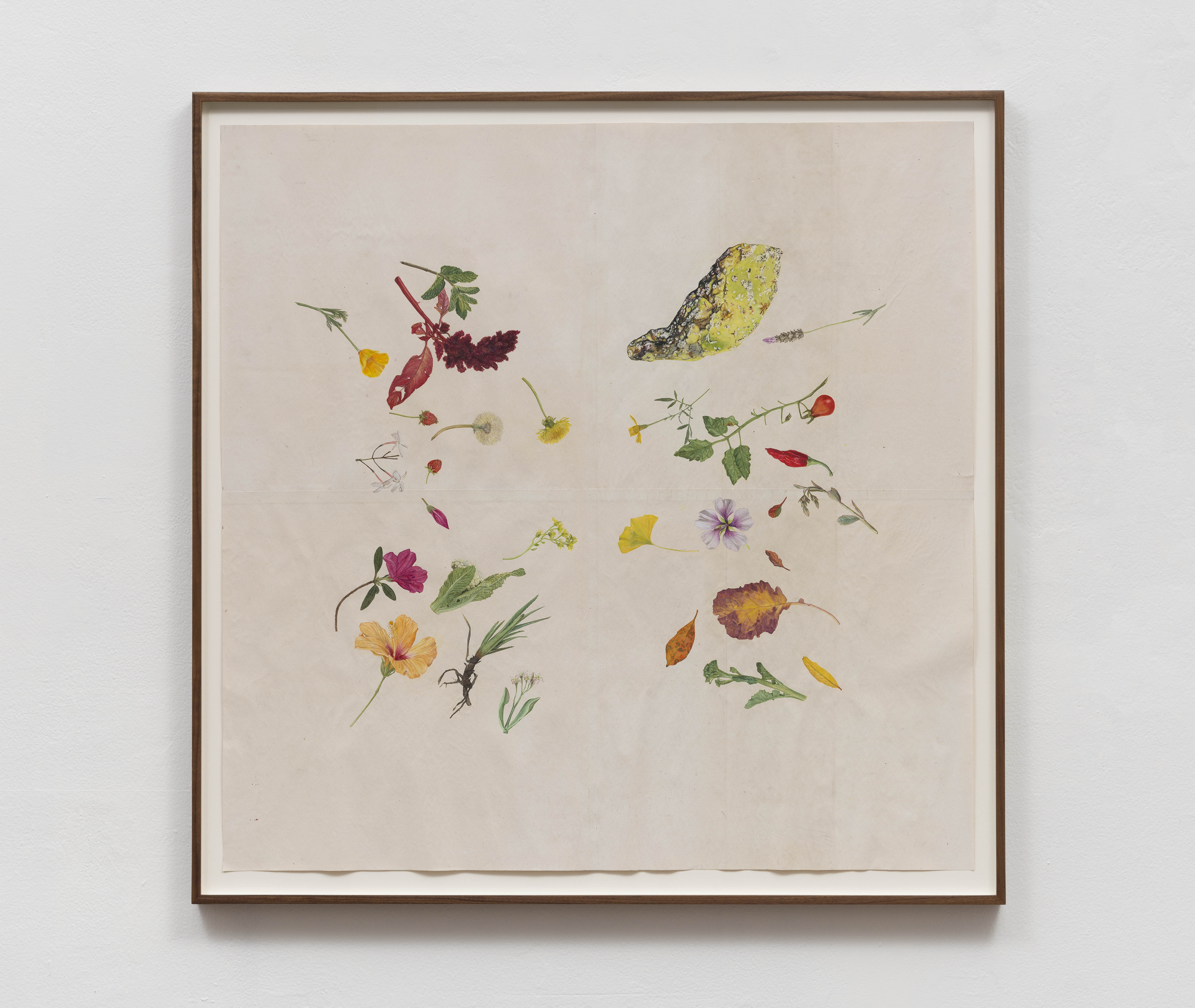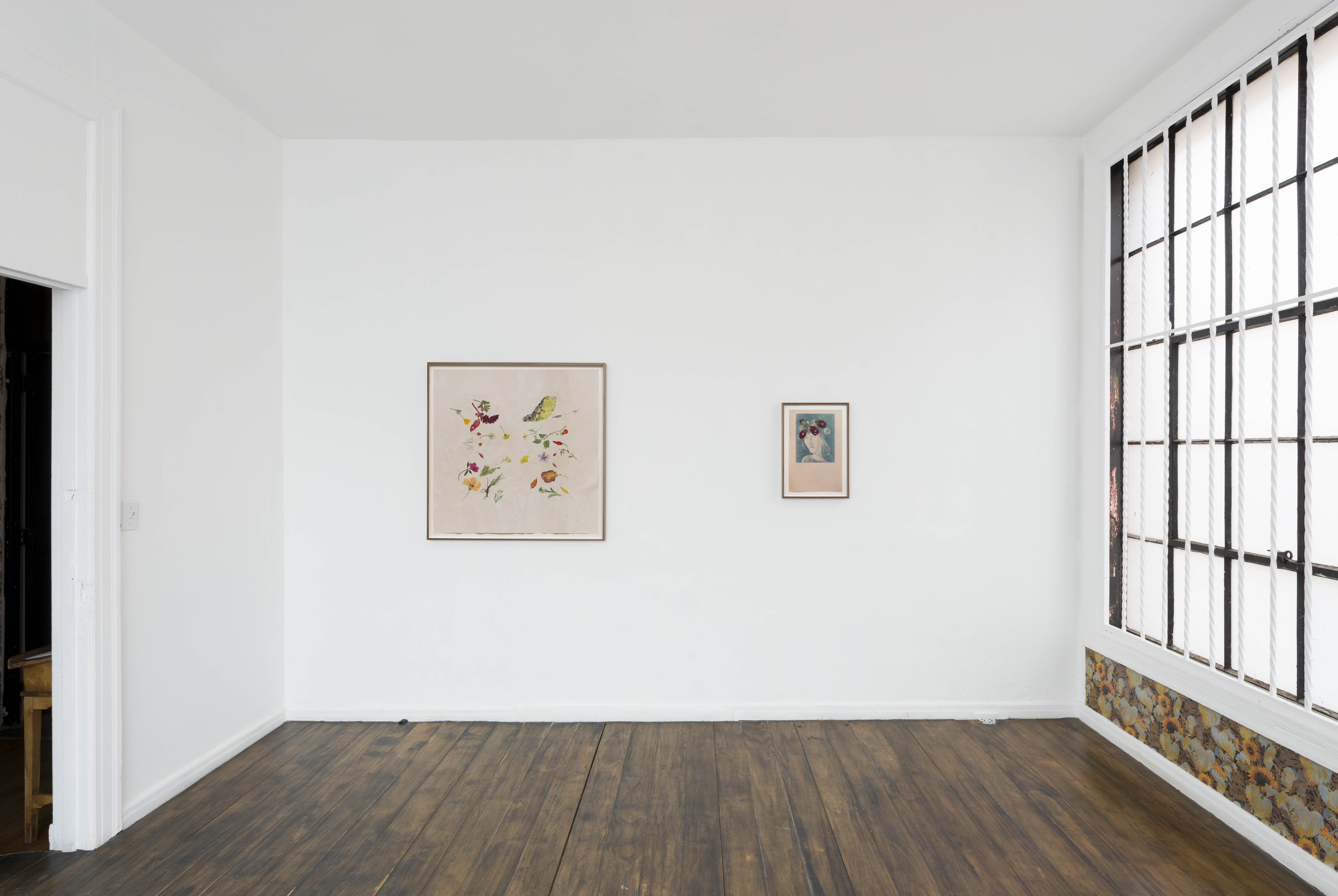The Melancholy Spring
Commonwealth & Council, March 17 - April 28, 2018

![Four Quarters of Growth [detail], 2018Gesso and watercolor on newsprint, 34"x 34"](https://freight.cargo.site/t/original/i/5564bde0c571fcce7c06b00fd6f81649d876bc93e54984554127f5bcbb42ed79/RVD_3029_Med.jpg)
![Four Quarters of Growth [detail], 2018Gesso and watercolor on newsprint, 34"x 34"](https://freight.cargo.site/t/original/i/abd170a1b0b340febe5d5dd0e8b2d7b755d0b03cd0bb200754416c6285dae8c9/RVD_3027_Med.jpg)

![Melancholy Spring with Winter Fruits [detail], 2018 Risograph, gesso, and watercolor on newsprint, 17"x 11"](https://freight.cargo.site/t/original/i/97b4c6857e17174fec80bc305dd63a7147c383a1d4f68debbe60bce53a4d646a/RVD_3007_Med.jpg)




![Wild Interior [detail], 2018Gesso and watercolor on wood panel, 24" x 18" x 2"](https://freight.cargo.site/t/original/i/671bec3000e802136bbf1d86cc8e7c2dca526a0dc5a212a8495fb48d9e0c529f/RVD_3034_Med.jpg)

![Still Life with Pomegranates and Prickly Pears [detail], 2018 Gesso and watercolor on handmade paper, 24" x 17"](https://freight.cargo.site/t/original/i/1de16742f871f5e173152267174142bd43a6c674f10fb8d7a9be0d3720f06c9f/RVD_2986_Med.jpg)



Press Release
Commonwealth and Council presents “The Melancholy Spring,” an exhibition of new work by Ariane Vielmetter completed in the seasons following the 2016 election.
The exhibition title refers to Wilhelm Lachnit's 1933 painting of the same name, an allegorical depiction of Spring as an exhausted, bedraggled woman wearing a crown of fresh flowers. Lachnit’s solemn depiction of Spring and her vanitas, the changing of the seasons, were perceived as threatening enough for the work to be pronounced “degenerate” by the Nazi regime. Vielmetter suggests a parallel with our present, where truth is largely mediated and distorted through a cacophony of strident, simplistic, and cavalier rhetoric in the digital sphere, suppressing any perspective which does not lend itself to the condensed parcel of a sound byte, meme, or tweet. Precious little in the way of lived experiences makes it to the legible surface, and is then further subjected to reduction or exaggeration. Vielmetter writes, “What I find so frightening about the way in which Lachnit and many of the painters of the “Neue Sachlichkeit” (New Objectivity) were silenced is that there is nothing visibly threatening about their work, other than its dedication to a kind of unvarnished realism.” Reality, those in power seem to warn us, is something that must be pre-digested for us, and should be treated with suspicion. Vielmetter instead hopes to build on what Donna Haraway calls “situated knowledge”— the radical notion that objectivity must be partial, locatable, and contestable, and that any body of knowledge that “promises vision from everywhere and nowhere, equally and fully” strips reality of its inherent complexity, making it easy for democratic norms to begin to break down.
Vielmetter mines a diverse lineage of writers, poets, and artists who were all in their own way abject realists, examining carefully their daily realities for the capacity and strength to endure inhospitable times. American watercolorist and wallpaper designer Charles Burchfield, who covered living rooms with a rich tableaux of outdoor life, ultimately came to focus on the life cycles within his garden. Here, Vielmetter presents a Burchfield-inspired wallpaper as a backdrop for her new artist’s book, “The Melancholy Spring.” In another work, Vielmetter painstakingly traces the changing seasons in her own garden, drawing the flowers, leaves, and fruits that grew over the course of the past year.
In an homage to a 1928 work by Neue Sachlichkeit painter Georg Scholz, which depicts cacti and lightbulbs arranged on a table before an open window in his Weimar apartment, Vielmetter paints an arrangement cobbled together from the source materials gathered in her own studio. Between a cactus and a Burchfield wallpaper hangs a collaged text combining handwritten notes by novelist Octavia Butler concerning the character Lauren Olamina, the tenacious heroine of “Parable of the Sower,” with scribbled ephemera from poet Emily Dickinson's “Gorgeous Nothings.” This tableau forms a coherent ecology of resistance, an attempt to push back against the simplification of collective experience into sweeping relativist or totalizing claims. Vielmetter’s work charts a turn toward a new empiricism, affirming objective reality as something we all share in rather than merely argue over. A complex reality, replete with so much difference and intersubjective involvement, yet offering just as many possibilities for the committed observer to investigate, and perhaps most importantly, for the resilient body—individual, political, communal—to survive.
Ariane Vielmetter (b. 1987, Tübingen, Germany; lives and works in Los Angeles) received her MFA from CalArts in 2012 and BA from UCLA in 2008. Her work has been included in recent exhibitions at the Chan Gallery at Pomona College, the Guggenheim Gallery at Chapman University, Visitor Welcome Center, Eastside International, Marine Contemporary, and the Center for the Arts Eagle Rock. Her self-published risograph artist books can be found at Otherwild in Echo Park, and her writing has been featured in Night Papers, Notes on Looking, and The Art Book Review.
Link